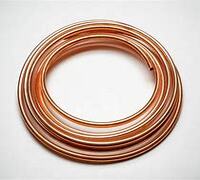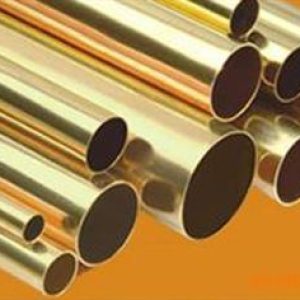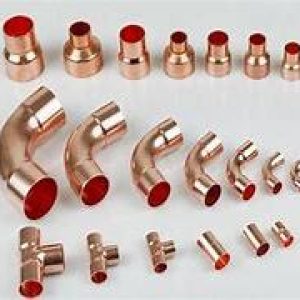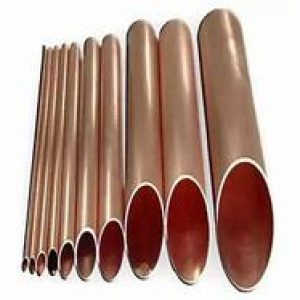Overview of C10100 C11000 C12000 AC Copper Pancake tubing / AC Copper Pipe
Material: C10100 C11000 C12000 AC Copper Pancake tubing / AC Copper Pipe is made from pure copper, which is a reddish-orange, malleable, and ductile metal. The most common types used for piping are Type K, Type L, and Type M, with varying thicknesses and applications.
Sizes: Copper pipes come in various diameters, typically ranging from 1/8″ to 4″ for residential and light commercial use. Sizes are denoted by their nominal diameter, not the actual inside diameter.
Applications: Copper is suitable for both water supply lines and gas lines (Type L or Type K). It’s also used in refrigeration systems, HVAC, and for conveying other fluids where corrosion resistance is crucial.
Features of C10100 C11000 C12000 AC Copper Pancake tubing / AC Copper Pipe
-
Corrosion Resistance: Copper naturally resists corrosion and the formation of rust, making it ideal for water supply systems where purity is essential.
-
Heat Conductivity: Copper is an excellent conductor of heat, which is beneficial in heating systems and hot water distribution, allowing for efficient energy transfer.
-
Longevity: Copper pipes can last for decades, even up to 50 years or more with proper installation and maintenance.
-
Non-toxicity: Copper is safe for potable water systems as it does not contaminate the water.
-
Ease of Installation: Copper pipes can be easily cut, bent, and joined using soldering, compression fittings, or flare fittings, although soldering is the most common method for permanent connections.
-
Flexibility: While rigid, copper pipes can be bent to a certain degree without kinking, especially softer types like Type M.

(C10100 C11000 C12000 AC Copper Pancake tubing / AC Copper Pipe)
Parameters of C10100 C11000 C12000 AC Copper Pancake tubing / AC Copper Pipe
C10100, C11000, and C12000 are designations for specific types of copper tubing or pipe commonly used in air conditioning (AC) applications. These codes generally refer to the chemical composition, manufacturing process, and dimensions of the copper material. Here’s a breakdown of these codes:
1. C10100: This is typically associated with oxygen-free high thermal conductivity (OFHC) copper. OFHC copper has very low levels of oxygen impurities, which makes it ideal for use in high-temperature and high-purity applications, such as refrigeration lines and heat exchangers. It has excellent electrical and thermal conductivity.
2. C11000: Also known as “Yellow Brass,” this refers to a copper alloy containing zinc, which gives it a yellowish appearance. C11000 copper is relatively inexpensive compared to pure copper and is often used for less critical applications like water supply lines or in some HVAC systems where durability and resistance to corrosion are important.
3. C12000: This is another type of copper alloy, possibly indicating a higher zinc content than C11000. C12000 could be a variation of Yellow Brass with better mechanical properties or slightly different alloying ratios. It may also have some corrosion resistance but may not be as pure as OFHC copper.
Parameters for these copper tubing/pipe may include:
– Outer diameter (OD)
– Inner diameter (ID)
– Wall thickness
– Schedule (a measure of wall thickness relative to the OD, e.g., Schedule 40, 80, or 160)
– Length
– Material standard (ASTM B88, ASME B36.10, etc.)
– Finish (e.g., smooth, annealed, electroplated, or pickled and passivated)
For specific details on dimensions and specifications, you would need to consult the manufacturer’s data sheet or contact a supplier to obtain the most accurate information for your application.

(C10100 C11000 C12000 AC Copper Pancake tubing / AC Copper Pipe)
Company Profile
Copper Channel is a trusted global metal material supplier & manufacturer with over 12-year-experience in providing super high-quality copper products and relatives products.
The company has a professional technical department and Quality Supervision Department, a well-equipped laboratory, and equipped with advanced testing equipment and after-sales customer service center.
If you are looking for high-quality copper materials and relative products, please feel free to contact us or click on the needed products to send an inquiry.
Payment Methods
L/C, T/T, Western Union, Paypal, Credit Card etc.
Shipment
It could be shipped by sea, by air, or by reveal ASAP as soon as repayment receipt.
FAQs of C10100 C11000 C12000 AC Copper Pancake tubing / AC Copper Pipe
Q: Is C10100 C11000 C12000 AC Copper Pancake tubing / AC Copper Pipe better than PEX?
A: Both have advantages. Copper is more durable and resistant to UV rays, but PEX (cross-linked polyethylene) is cheaper, easier to install, and more flexible. The choice depends on factors like budget, installation complexity, and personal preference.
Q: How do you join C10100 C11000 C12000 AC Copper Pancake tubing / AC Copper Pipe?
A: Copper pipes are commonly joined using soldering (also known as sweating), where a fitting is fitted onto the pipe ends and solder is applied to create a leak-proof seal. Compression and push-fit fittings are alternatives for easier, no-solder connections.
Q: Can C10100 C11000 C12000 AC Copper Pancake tubing / AC Copper Pipe freeze and burst?
A: Like any pipe material, copper can freeze and potentially burst if the water inside freezes and expands. Proper insulation and maintaining temperatures above freezing are necessary to prevent this.
Q: Does C10100 C11000 C12000 AC Copper Pancake tubing / AC Copper Pipe need to be grounded?
A: In most plumbing applications, copper pipes do not require grounding. However, for electrical grounding purposes, specific codes and standards may dictate when and how copper pipes can be used as part of an electrical grounding system.
Q: How to C10100 C11000 C12000 AC Copper Pancake tubing / AC Copper Pipe before soldering?
A: Before soldering, copper pipes and fittings should be cleaned with a wire brush or emery cloth to remove any oxidation, dirt, or oils. Flux is then applied to ensure a good bond between the pipe and the fitting during the soldering process.

(C10100 C11000 C12000 AC Copper Pancake tubing / AC Copper Pipe)




